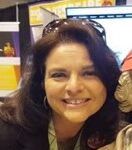This post is written by Jennifer D. Morrison. Read more about Jennifer at the bottom of this post.
Over the past twenty years that I have served as an instructional coach, staff development specialist, teacher educator, and National Board candidate mentor, it has been clear to me how important it is to engage in being not only a reflective practitioner but also a professional capable of clearly unpacking my practice. Zeichner and Liston (2014) point out that excellent teachers, and by extrapolation excellent educational leaders, are often not aware of what they have learned and how they enact their practices. They have “tacit knowledge” that is known but not articulated; enacted but not explained. While it may be acceptable for teachers and educational leaders to operate in day-to-day spaces with this tacit knowledge, it does not foster growth of the self or others. If leaders cannot clearly understand and articulate the curricular, instructional, pedagogical, and relational decisions they are making as well as provide the rationale for those decisions, they cannot effectively serve in the leadership capacity needed to facilitate change within a school environment.
Burch (1974) developed a model of the Four States of Competence to help explain the processes in which an individual engages as s/he learns new skills.

As preservice teachers, we are unconsciously incompetent — we don’t know what we don’t know. We stumble through our teaching, not knowing what we should be doing, if we are doing it right, or even what questions to ask. As we begin to acknowledge our lack of knowing, we move into being consciously incompetent; we now know exactly how little we understand about the subject. It then becomes our mission to learn more, try more, figure out what works and what doesn’t in our attempts to improve. As we seek answers and help, practice, make adjustments, and are acutely aware of our growth, we shift to conscious competence. We know what we are doing and why we are doing it. We have grown; we now know things, and it shows. When these practices gain a level of automaticity — where we no longer have to think about every little action we take and why — we become unconsciously competent. “Right” is now a feeling, a sense that has developed with thought and practice. Any time we move into a new learning space, such as being a literacy coach or administrator, we begin the process again.
This is usually where discussion of Burch’s model ends. However, I advocate for another step. In all my leadership roles, it has been necessary for me to step back into the conscious competence space. Why? Because when I am coaching a teacher in how to differentiate a lesson or teaching adult students about implementing a literacy strategy, it is not enough for me to say: “Yeah, I just do it, and it’s right. Here, watch me.” That does not encourage growth in those with whom I am working. I have to unpack what I am able to do automatically and make it transparent. I have to show that what I am doing is not by accident but the result of many years of experience, lots of reading and reflecting, and lots of corrected mistakes. I have to be able to say: “This is how you do it, and this is why it works.” If I am unconsciously competent, I am not able to provide that form of instruction; and afterall, effective leaders are ultimately teachers. My ability to consciously understand my competence assists others in their moving from incompetence to competence. In order to be reflective teachers and effective literacy leaders, it is important for us to deconstruct the places where we are unconsciously competent. We must be able to understand what we are doing, why we are doing it, how we can improve it, and what might happen if we did it differently. We need to look at what we do automatically with the eyes of an outsider, “making the familiar strange” (Mills, 1959).
What might this look like? This means first, reflecting on our processes and how we engage with literacy learning ourselves. Early in my teaching career, I was assigned an SAT/ACT prep class. My students overall did not do well on the reading comprehension sections of tests. At the same time, I was preparing for the GRE exam to apply for graduate school, and I regularly rolled out near perfect scores on the reading comprehension. For me to better help my students, I had to step back into conscious competence and metacognitively consider what exactly I was doing in my reading of these passages and in my answering of comprehension questions that led me to a successful outcome. How was I engaging with the text? What was I thinking as I read? What kinds of predictions was I making? How did I process the questions? What did I do with vocabulary I didn’t know? Where was I rereading, where was I paraphrasing, and why? Once I unpacked my own process, I could then effectively convey to my students what I did and why through think alouds and walking through examples.
The same can be said when working with preservice and inservice teachers. In workshops or professional learning sessions, it is not enough to provide the formula of how to do a particular technique or strategy; it is imperative to also provide the theoretical reasons and reflective process that undergird the strategy. For example, I often begin my courses by having students complete a literacy autobiography, an activity they can easily enact in their own classrooms. While we do the activity, however, I also parallel the steps with rationales and explanations for what we are doing and why. I walk them through the assignment by modeling my own autobiography first. I show not only what my literacy experiences have been but also how they have shaped me as an individual now. This includes delineating my resultant strengths, challenges, and biases. As we work through their autobiographies, I model for them the unpacking process. What was it like for them to read and write in different subjects when they were younger? Who influenced their literacy habits and preferences? What life experiences influenced their literacy habits and preferences? How have these experiences impacted their views of literacy now? How do these preferences, or reticences, impact the way they interact with literacy now? How can they move beyond the fear, shame, or negative feelings that might have accompanied literacy experiences? How might their experiences impact interactions with students who do or don’t view literacy in the same way they do? For individuals with literacy affinities, the questions help them to see why they have positive dispositions toward reading and writing and to unpack the tacit literacy knowledge that has become automatic. This is important because not only can they better recreate some of the experiences for their students, they are also better able to see the correlation between their experiences and how they view reading and writing, and why other people, including many of their students, may not have the same perspectives. I share with them that Bourdieu (2013) argues our habitus shapes our understanding of the world, our ways of knowing (epistemologies), and the attitudes/beliefs/biases we carry into relationships with others and our teaching spaces. In order to be able to teach children, we have to know where we come from, why we believe what we believe, and consider how we can interrupt the transmission of our unconscious biases, which can be done through engaging in conscious competence and reflexivity. Otherwise, we can inadvertently create environments filled with microaggressions toward particular students, which can deeply impact student learning.
Stepping back into conscious competence and engaging in reflection is, in many ways, emancipating (Zeichner & Liston, 2014). By engaging in thoughtful, conscious teaching and leadership, we free ourselves, our teachers, and our students from the blind following of established routines, policies, and plans. It gives us the freedom — and responsibility — to question, to wonder, to consider, to criticize, to advocate, and to defend. Thinking is a political action, and “teaching is a subversive activity” (Postman & Weingartner, 1971). Reflective teaching and conscious competence empower us to be change agents within our own educational spheres, whether that is in our classrooms, schools, districts, or at home with our own children. We learn to be critical consumers of curricula and policy, and we find our voices to change the status quo. This is how we change the currently negative national narrative for our profession — one child, one classroom, one teacher at a time.
References
Bourdieu, P. (2013). Outline of a Theory of Practice. Cambridge Press. DOI: https://doi.org/10.1017/CBO9780511812507
Burch, N. (1974). The learning stages model. Solana Beach, CA: Gordon Training International.
Mills, C.W. (1959). The Sociological Imagination. New York: Oxford University Press. (40th anniversary edition, 2000).
Postman, N. & Weingartner, C. (1971). Teaching as a Subversive Activity. Delta Publishing.
Zeichner, K. & Liston, D. (2014). Reflective teaching: An introduction. Second edition. Erlbaum.

Dr. Jennifer D. Morrison is a Clinical Assistant Professor at the University of South Carolina and a National Board Certified Teacher in AYA/ELA. She earned her Ph.D. from the University of Nevada, Reno, in Language, Literacy, and Culture. She worked as a middle and high school English teacher and instructional coach for 19 years. Her research agenda focuses on teacher induction, literacy attainment (particularly digital and multimodal), and teacher inquiry processes. She has been published in such journals as English Journal, Journal of Adolescent and Adult Literacy, Talking Points, Principal Leadership, and Educational Leadership.
Cover Photo by Lindsay Henwood on Unsplash

Thanks, Jennifer, for reminding us that education as a vocation requires lifelong learning! I believe that lifelong learning is the bridge that teachers cross on their journey to become educators.